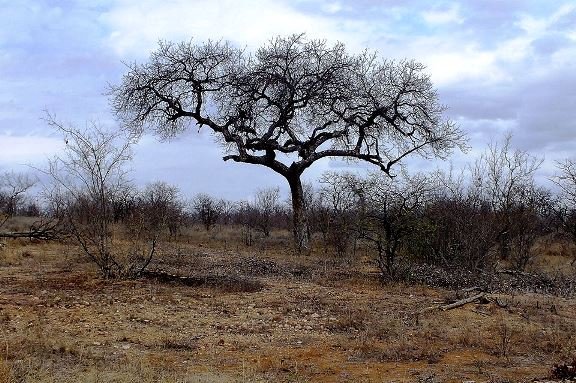Marula and fire

Controlled winter fires in the Kruger National Park are conducted in the dry, rainless grassland for purposes of regenerating the veld. Managing veld fire and understanding its role in ecology have become scientific specialisation fields.
What growth and living processes are being arrested instantly by the time, temperature and scope of every fire are unique features impacting on the burnt area and even its surrounds, for an unknown period into the future.
The multi-stemmed shrubs, the suffrutices and some trees, like the marula in picture resprout; other plant species reseed, the seeds dispersing even in the moment on the draughts of smoky air of the life-changing moments.
The first rain after the fire is the most significant trigger of regrowth. Hungry animals that survived the blaze can’t wait for the first green sprouts to appear. Managing every fire is vital to harness escalation and its effects.
Timing is always a critical element, the skill in avoiding a windy day during the often-windy winter season. Escalation of flames in dry leaves happens suddenly, causing the havoc of unintended consequences that culminate in tragic loss. Plants in the path of the fire wait their turn, animals run in the vision-impairing smoke, not always escaping due to lack of speed or choice of direction.
Fighting a super-hot fire where biomass has accumulated over a too long period is very hard, sometimes impossible. Picking the place of the controlled fire, the “cold burn” is thus equally important.
The fire from natural causes like lightning and unnatural ones like the discarded, lit cigarette starts anywhere, or wind takes it in random fashion to the unfortunate anywhere (Wikipedia; www.krugerpark.co.za).

